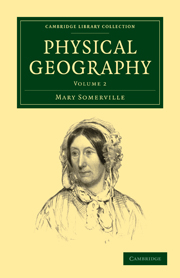Summary
North America is divided into four distinct water systems by the Rocky Mountains, the Alleghannies, and a table-land which contains the great lakes, and separates the rivers that flow into the Arctic Ocean from those that go to the Gulf of Mexico. This table-land is a level, nowhere more than 1200 or 1500 feet above the surface of the sea, and is itself drained by the St. Lawrence and the rivers that flow into Hudson's Bay. The St. Lawrence rises in Lake Superior, and, after joining the five great lakes, runs north-east into the Atlantic, and ends in a wide estuary. It has a basin of 537,000 square miles, of which 149,000 are covered with water, exclusive of the many lesser lakes with which it is in communication.
North of the watershed there is an endless and intricate labyrinth of lakes and rivers, almost all connected with one another. But the principal streams of these arctic lands are the Great Fish River, which flows north-east in a continued series of dangerous and all-but impassable rapids to the Arctic Ocean at Melville Strait. The Copper-mine River, of much the same character, after traversing many lakes, enters the Icy Sea at George IV.'s Gulf; and the M'Kenzie, a stream of greater magnitude, formed by the confluence of the Peace River and the Athabasca from the Rocky Mountains, after flowing north over 16 degrees of latitude, enters the frozen ocean in the Esquimaux country somewhere beyond the arctic circle.
- Type
- Chapter
- Information
- Physical Geography , pp. 1 - 16Publisher: Cambridge University PressPrint publication year: 2009First published in: 1848



